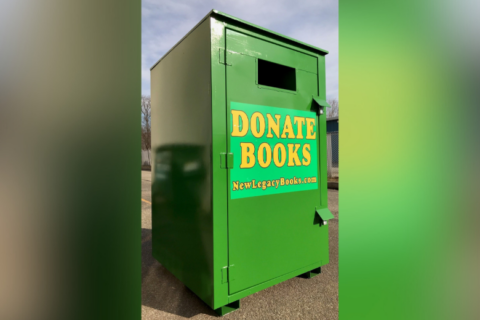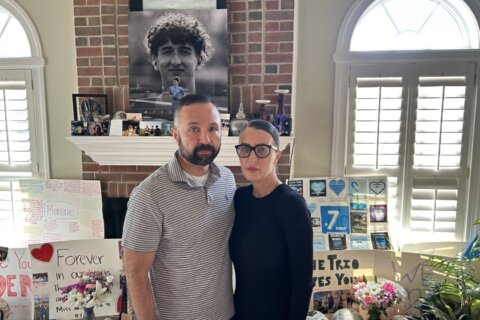This video is no longer available.
With his car facing a stretch of Columbia Pike in Annandale, Virginia, Friday afternoon, Fairfax County Police Officer Kevin Gehr rolled his window down.He held what’s called a lidar (light detection and ranging) gun, which he used to detect the speeds of oncoming traffic at a distance.
The speed limit along that part of the busy roadway is 25 mph. That’s in place, Gehr said, to keep pedestrians safe across the corridor.
Using the lidar technology, which makes a loud beeping noise while it’s being used, Gehr clocked a black Nissan SUV driving 44 mph. He turned his lights on to initiate the traffic stop.
It was the first of several stops of the day, as part of Fairfax County police’s “Road Shark” campaign. The efforts, which increase police visibility and use coordinated enforcement, aim to make the roads safer. The plans also include collaboration with Virginia State Police.
Last year, nearly 25,000 tickets and warnings were given out over four waves of the program. During this year’s first wave in March, almost 5,700 citations and warnings were given out. The campaign’s second wave of the year ends this weekend.
The initiative, Gehr said, is less about the quantity of tickets and warnings issued and more about keeping roads safe. The focus is on crash-prone parts of roads, and areas where residents or drivers call the police department to tell them about a stop sign where drivers don’t stop or school zones where drivers speed.
The goal, as he sees it, is to crack down on speeding and distracted driving.
“Anybody who’s driven in the DMV knows that you can drive to work and see 100 different people on their cellphones,” Gehr said. “But ultimately, we know speed is the thing that kills. Our goal is education, enforcement and reducing, ultimately, our fatalities and our fatal accidents within Fairfax County.”
When the Nissan SUV pulled onto a side street, near Columbia Pike and Evergreen Lane, Gehr noticed its registration sticker was from 2022.
The driver didn’t have their license or registration with them, but Gehr focused on other concerns. The safety inspection expired in July 2023. The vehicle’s brakes and windshield wipers, among other parts, likely hadn’t been inspected, he speculated. That’s a safety concern.
“It’s not just about the sticker,” Gehr said. “It’s not just about paying it to Uncle Sam every two years to make sure that you’re updated. It’s important.”
Ultimately, Gehr wrote three citations: one for speeding, one for the expired registration and one for the lack of a recent safety inspection.
While on traffic patrol, Gehr said he’s looking for “egregious” violators, oftentimes in areas near schools. The threshold used to make a traffic stop usually varies by each officer, he said, but “the posted sign is a posted sign.” He’s usually looking for drivers going 15-20 mph over the limit, and those who are on their phones or don’t stop at stop signs. He listens for engines revving.
Drivers usually speed in between traffic lights along straight stretches of road, Gehr said. Before issuing citations, he said officers check to make sure speed limit signs are posted and that their equipment is functioning properly.
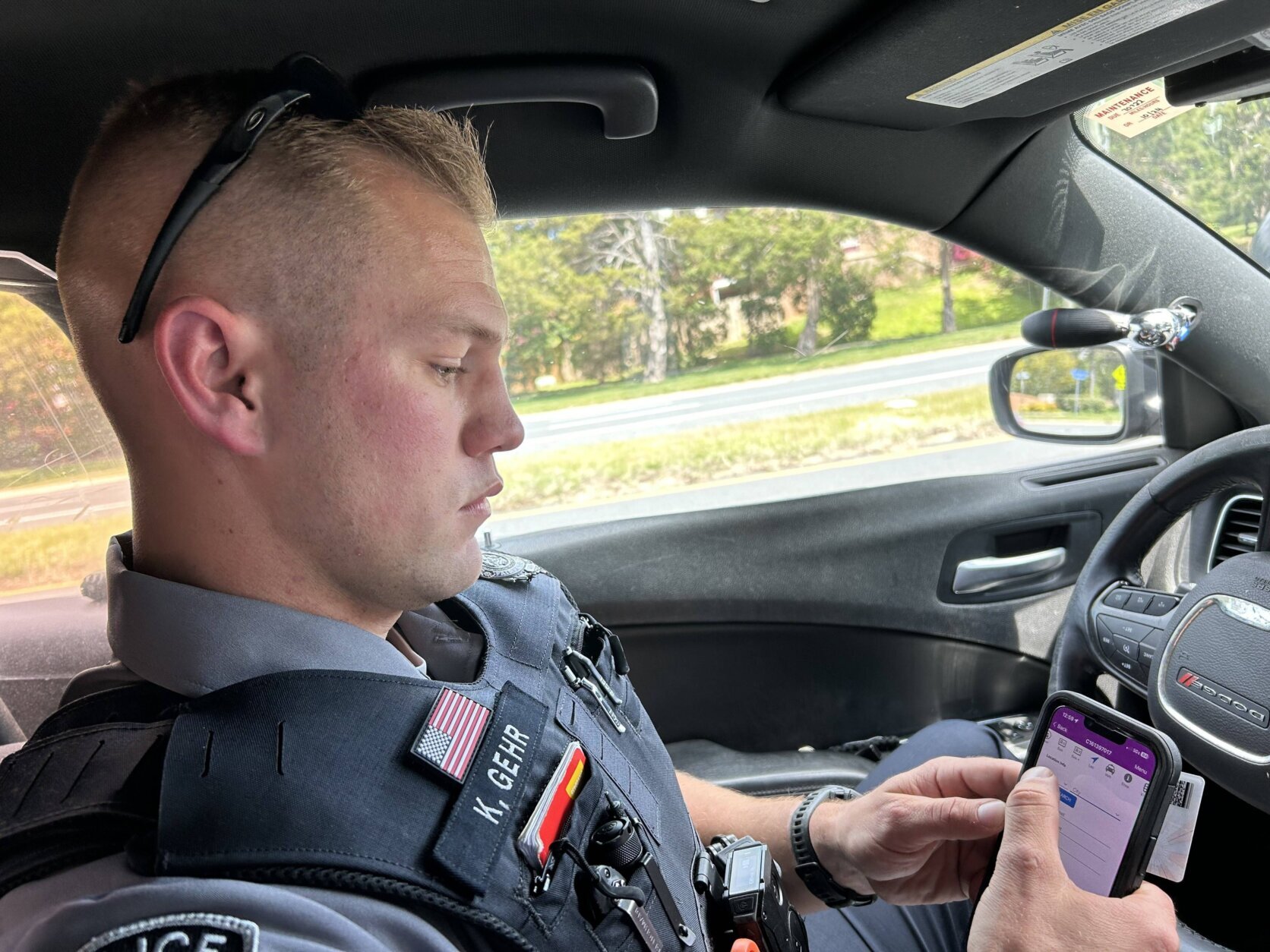
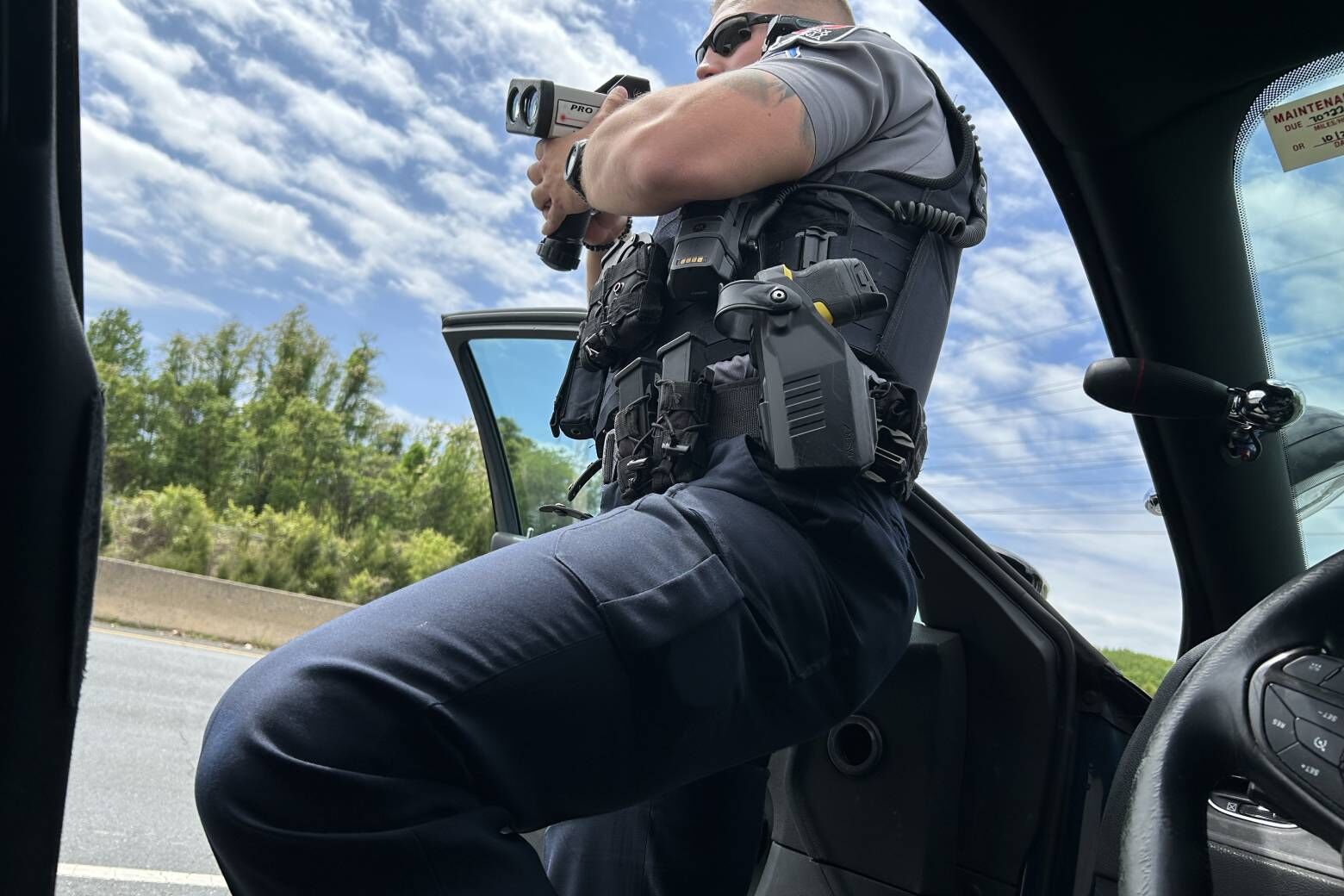
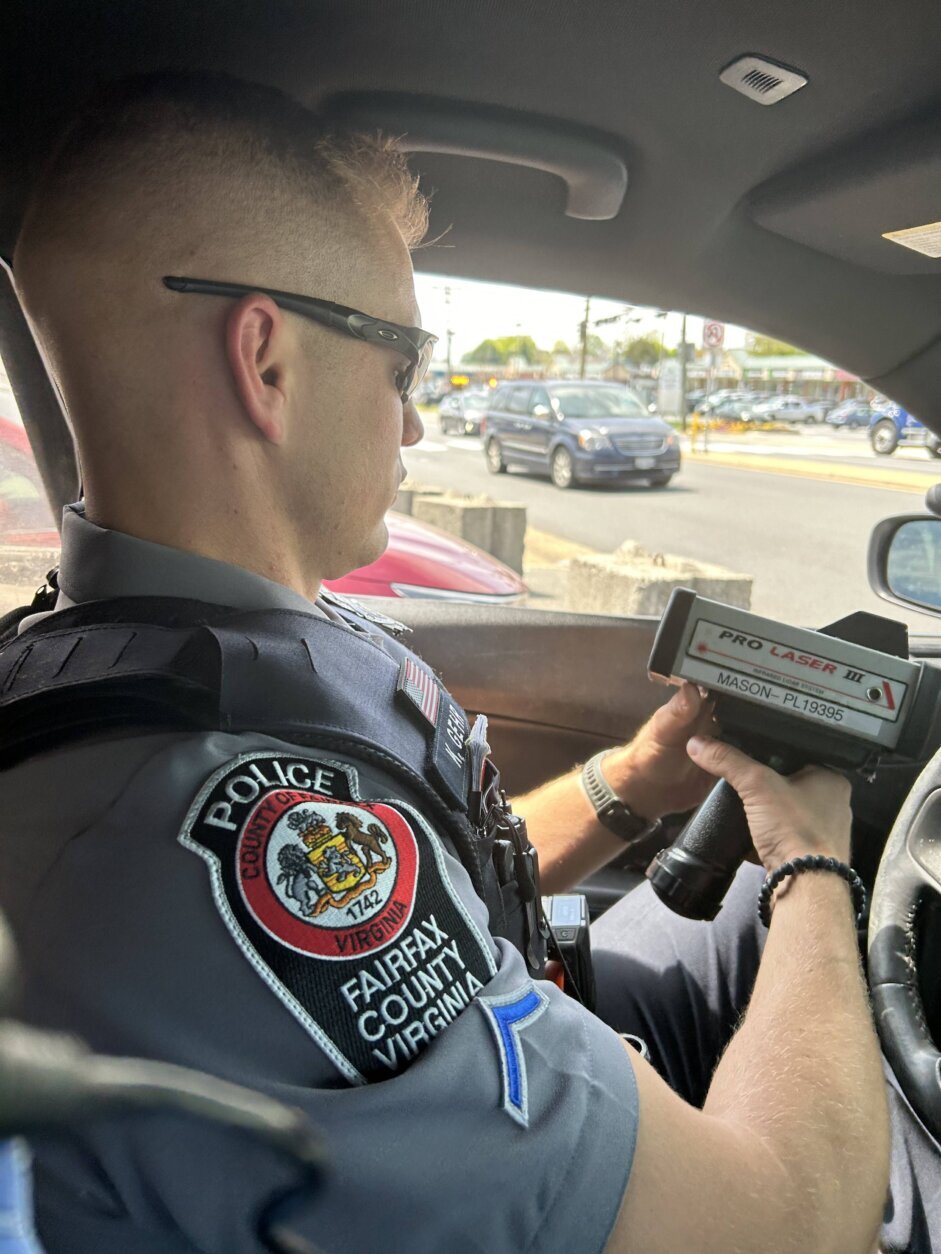
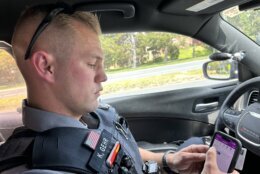
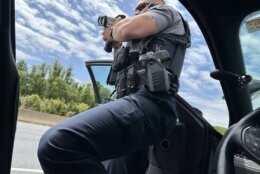
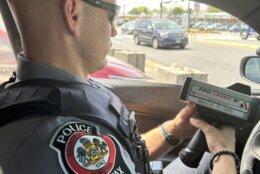
“Ultimately, this isn’t about a number or what statistics are out there,” Gehr said. “It’s really about that enforcement piece and the education of the community.”
A short time after the Nissan stop, Gehr returned to Columbia Pike. After a few minutes of using the lidar gun to check speeds, he noticed a gold Honda SUV quickly change lanes. All the cars were driving at the speed of traffic, he said, “except for one. They pop out of the lane, and they try to skid around traffic real quick.”
The car was driving 41 mph. Gehr turned his lights on.
“We’re going to write her a citation, because 16 over in a high-pedestrian area is pretty not great,” Gehr said.
Not all stops result in tickets, though. On Little River Turnpike near Thomas Jefferson High School for Science and Technology, Gehr was checking speeds when he caught a black Mustang driving 54 mph in a 40 mph zone.
He made the traffic stop, but decided to give the driver a warning.
“This is one of those encounters that I look at as an educational moment,” Gehr said. “(I) might not write them a citation because it’s not out of this world, but they still were, in fact, speeding.”
While the initiative has yielded thousands of warnings and citations, Gehr said the coordinated efforts and increased presence serves as a deterrent.
“When people see our police lights out there, when they see the logo on the side of the car, they think twice before speeding up and breaking the motor vehicle laws of the Commonwealth,” Gehr said.
Drivers across the region, he said, are usually rushing to get somewhere.
“My concern as a police officer is just slowing people down,” Gehr said.
Get breaking news and daily headlines delivered to your email inbox by signing up here.
© 2024 WTOP. All Rights Reserved. This website is not intended for users located within the European Economic Area.


